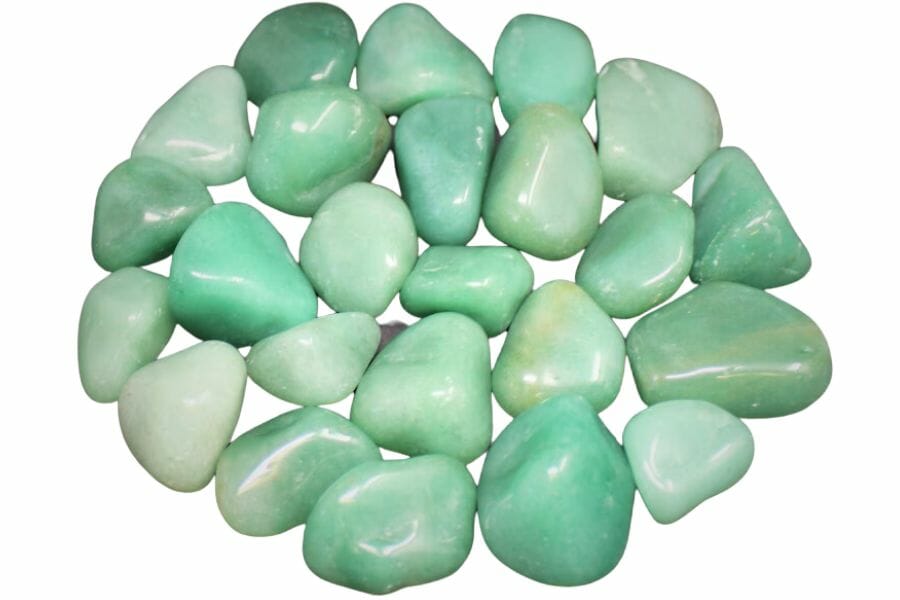Amazonite and aventurine are real crowd-pleasers, whether you’re picking out a new piece for your jewelry box, adding to your rock collection, or scouting for minerals to mine.
Both of these minerals have their own set of quirks. When you look more closely, you can compare amazonite vs aventurine and see what sets them apart from each other.
It’s not just about knowing what they look like – it’s also about understanding what makes each one special in its own way. So let’s dive in and learn more about these two fascinating gems.
Amazonite vs Aventurine – The Major Differences
Amazonite and aventurine may have striking similarities at first glance, but they have quite a few differences. To really understand these stones, it’s important to go into details like their color, crystal structure, and other distinguishing features.
Appearance – Amazonite has a mottled surface
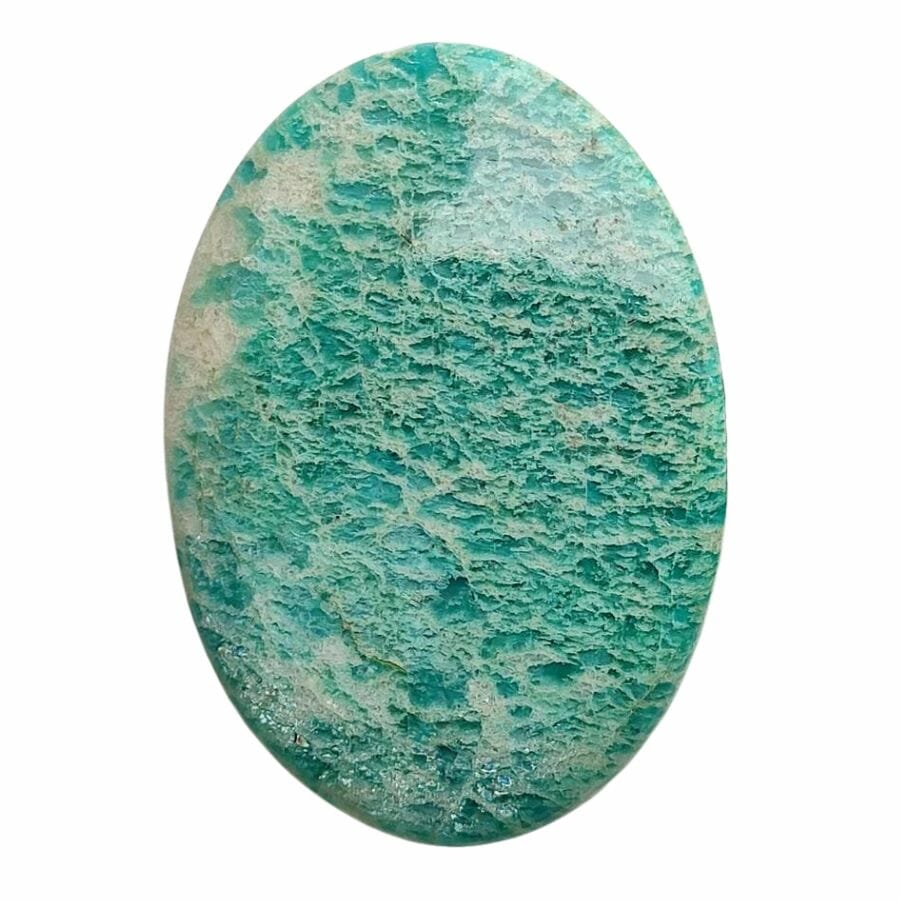
One thing you might notice with amazonite is that it often has flecks on its surface. This is because of inclusions, or bits of other minerals that got mixed into the building blocks of the mineral while it was forming.
These inclusions give amazonite a mottled or speckled look. Amazonite also has a certain level of translucency, meaning it lets some light pass through. It’s mostly opaque, however, which means that you won’t be able to see through it.
Meanwhile, aventurine has a different kind of beauty. It’s known for a glittery effect known as “aventurescence.”
Aventurescence is a sparkly, glittery effect in a mineral. It’s caused by tiny, light-reflecting inclusions within the mineral that scatter light, giving it a shimmering appearance.
Like amazonite, aventurine is also typically translucent to opaque.
In short, if your stone has a speckled look, it’s likely amazonite. But if it has a sparkly effect, then it’s probably aventurine.
Colors – Aventurine comes in green, red, orange, brown, blue, and gray
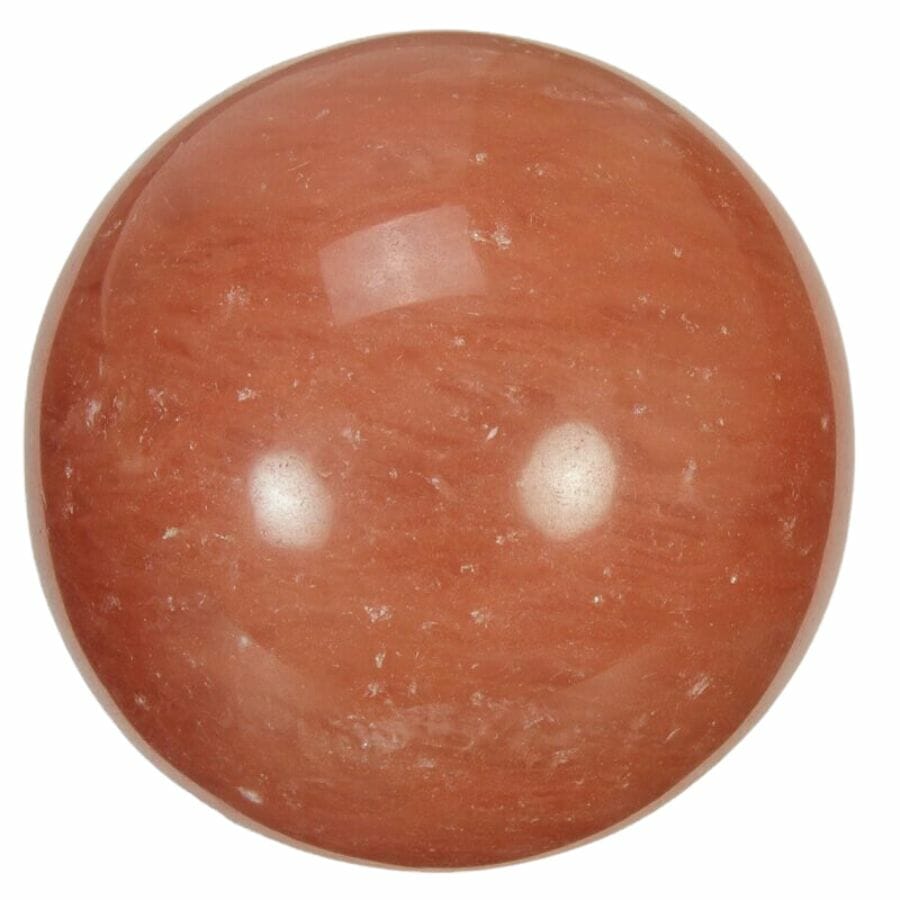
Amazonite’s colors range from sky-blue to blue-green. It’s like looking at calm turquoise beaches or a blue summer sky. But here’s the cool part: each stone can have a slightly different shade.
Some might remind you of the sky, while others could have a brighter, teal hue.
And most of the time, the colors are soft, almost like pastels. That’s what makes amazonite so soothing and easy on the eyes.
Now, aventurine is a bit of a wild card. Sure, it’s often green, but that’s not the end of the story. This versatile gem can also show up in shades of orange, brown, yellow, blue, or even gray. It’s like a chameleon of the gem world!
The color of aventurine depends mostly on the type and quantity of minerals that got mixed in when the stone was forming.
Streak – Amazonite leaves a white powder when scratched
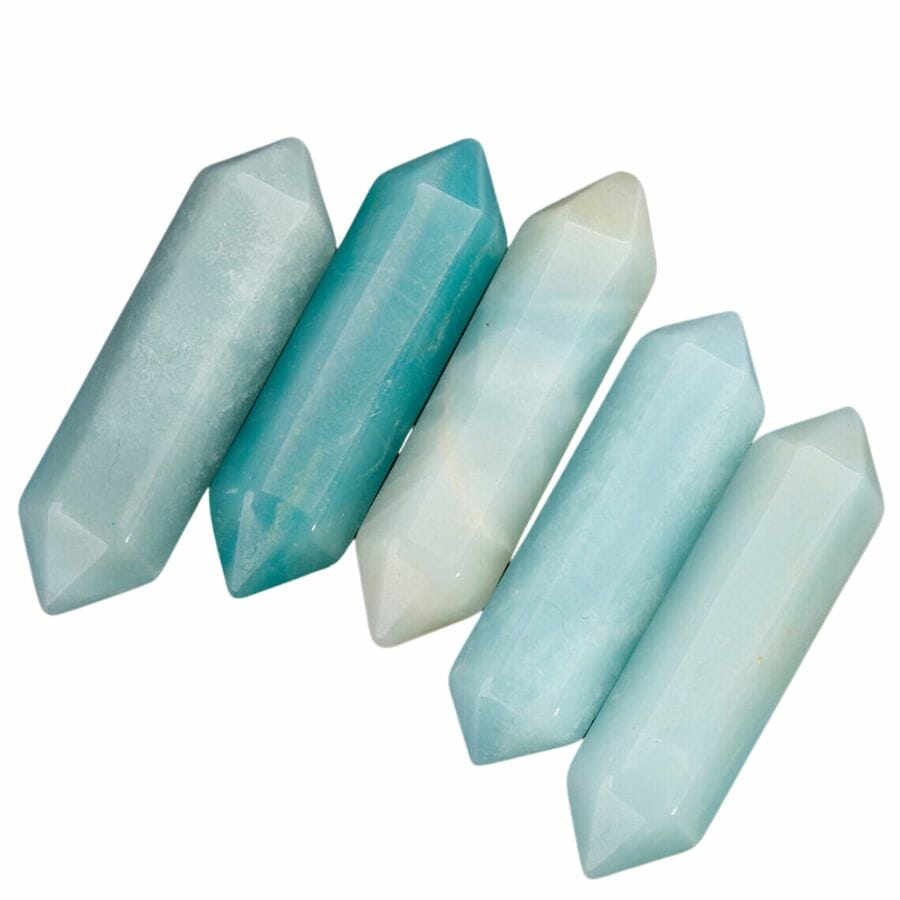
Let’s chat about streak. Imagine you’ve got a mineral and you rub it against a streak plate. The color of the powder that the mineral leaves behind is what we call its streak.
When comparing amazonite vs aventurine based on their streak, you’ll see a stark difference.
Amazonite, no matter how green or blue it looks, will always leave a white streak on the plate.
On the other hand, if you do the same with aventurine, it won’t leave any color. Aventurine leaves a colorless streak because it’s harder than the streak plate, and only minerals softer than the plate leave colored streaks.
Luster – Aventurine both gleams and sparkles
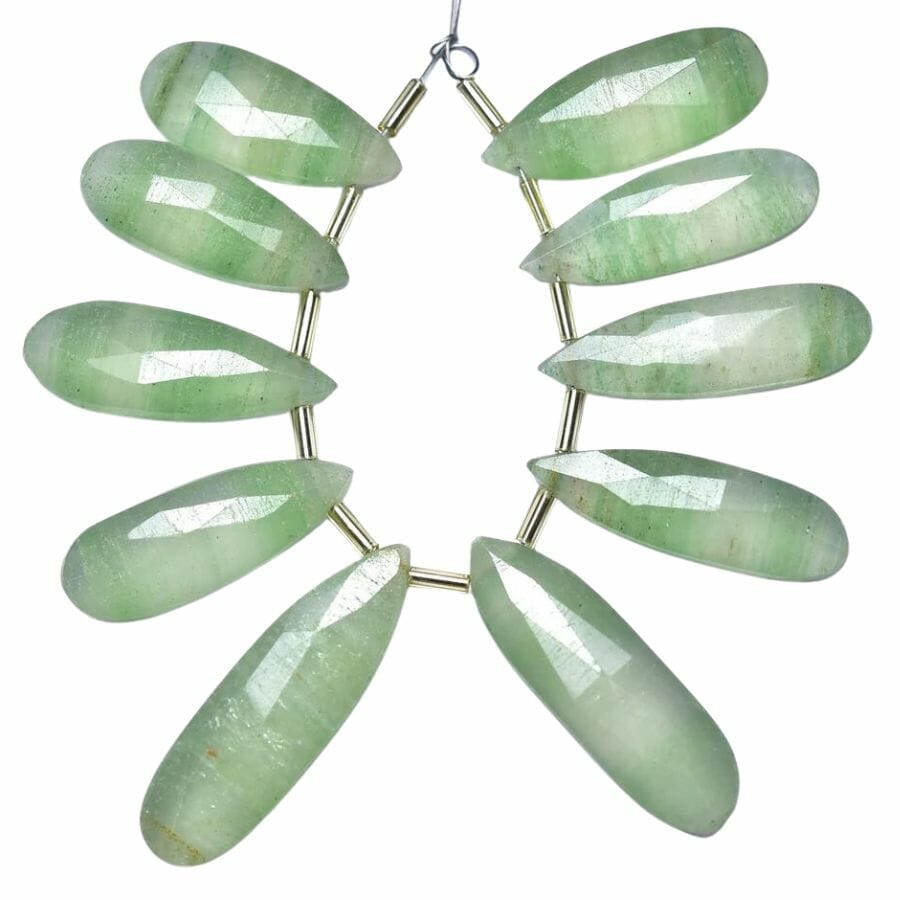
In geology, luster refers to the way light interacts with the surface of a mineral. It describes how shiny or dull a mineral appears when light strikes its surface. The two main types of luster are metallic and non-metallic.
When comparing aventurine vs amazonite based on luster, you might notice some subtle differences.
Amazonite has a luster that ranges from vitreous, or glass-like, to pearly. This means it has a clean, somewhat shiny surface, particularly when it’s been cut and polished.
Think about how a pearl or piece of glass shines under light. That’s the kind of radiant glow you’ll see from amazonite. It’s subtle but elegant, capturing light in a soft and appealing way.
Aventurine is a bit different. While it also has a vitreous luster, giving it a glassy sheen, there’s an additional feature that makes it special.
Remember that aventurine has aventurescence, a glistening or sparkly effect. This means that tiny mineral inclusions inside the stone reflect light, creating a shimmering sparkle. It’s like holding a tiny constellation of stars in your hand.
So, if a stone has a soft, shiny look, it’s probably amazonite. But if it sparkles in the light, it’s likely aventurine. These differences in luster are what make each stone stand out in its own special way.
Hardness – Amazonite is a little bit softer
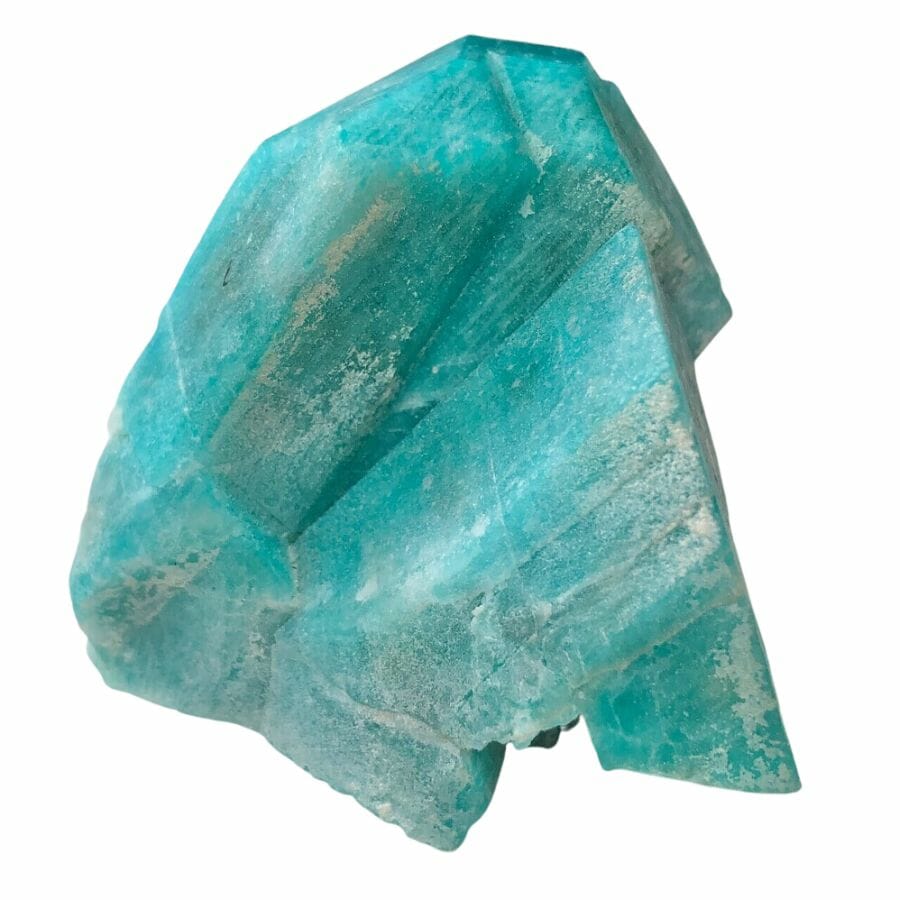
This hardness of minerals is measured on something called the Mohs hardness scale, which ranks minerals from 1 (the softest) to 10 (the hardest).
Amazonite and aventurine have pretty similar hardness ratings, but there’s still a noticeable difference.
Let’s look at amazonite first. It’s a bit of a tough cookie, with a Mohs hardness rating of 6 to 6.5.
What does this mean? Well, if you took a harder substance, like a diamond (which ranks a solid 10 on the Mohs scale), and tried to scratch the amazonite, it would succeed.
But if you tried to scratch it with something softer, like a copper coin (which ranks just 3 on the Mohs scale), the coin wouldn’t stand a chance.
Now, aventurine is just a tad tougher, with a Mohs hardness of 6.5 to 7. This makes it a bit more resistant to scratches than amazonite. So, if you try to scratch aventurine with the same copper coin, it would also remain unscathed.
Formation – Aventurine forms from quartz
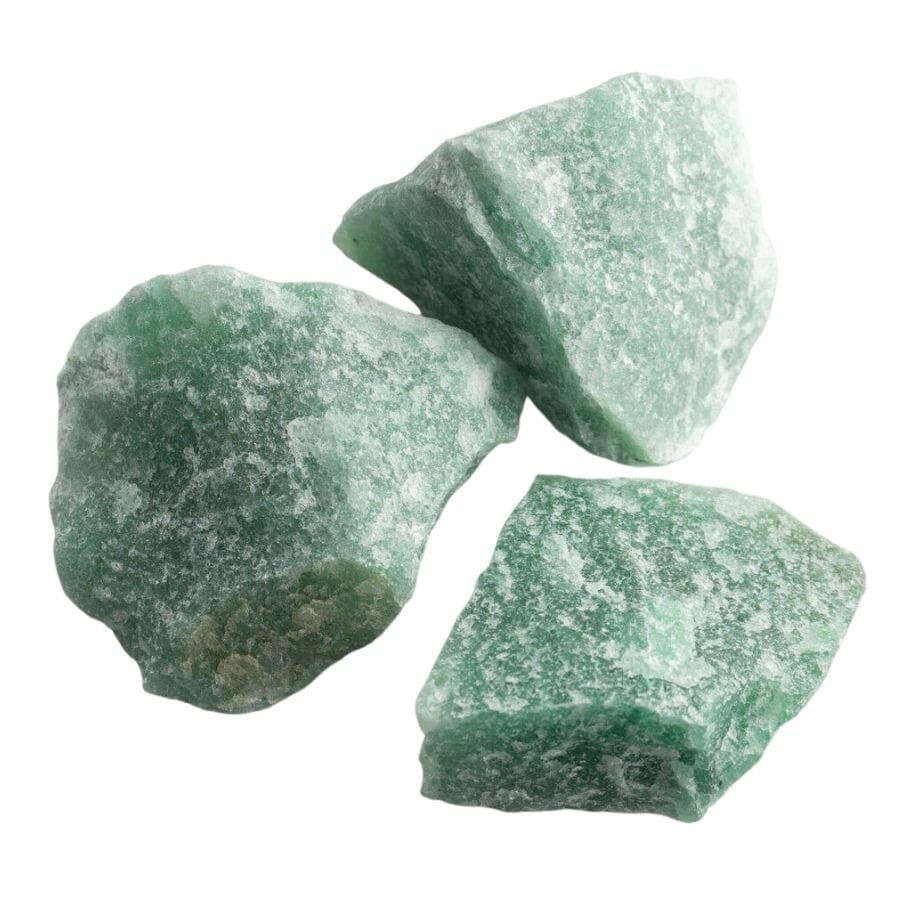
Amazonite and aventurine have their own origin stories.
Amazonite forms deep inside the earth’s crust in places where you find granite and pegmatites. It’s created by a process where molten rock, also known as magma, slowly cools down.
This slow cooling process is what allows the larger crystals to form and gives Amazonite its distinct look.
Regions known for their geological activity, such as mountain ranges, usually make the best rockhounding locations.
On the other hand, aventurine has a different origin story. It’s created by something called metamorphic processes. This happens when rocks that have a lot of quartz in them are changed by heat, pressure, or chemical activity.
The cool sparkly effect that you see in aventurine comes from tiny mineral particles that are mixed in with the quartz.
The origin stories of these stones show how amazing and complex nature can be. Amazonite and aventurine undergo a journey from deep within the earth to eventually become the beautiful gemstones we see today.
Crystal structure – Amazonite’s crystals look like slanted boxes
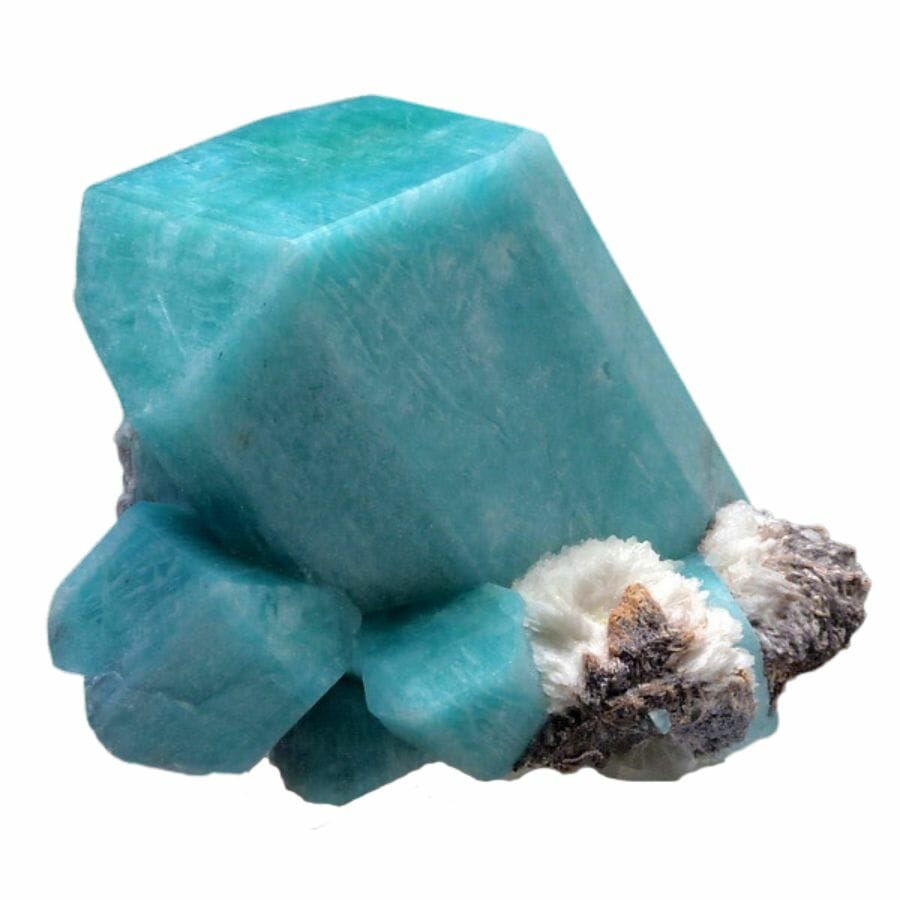
Both amazonite and aventurine have fascinating crystal structures.
Amazonite is actually a type of mineral called microcline feldspar. What’s special about this mineral is that it has a triclinic crystal system. Now, “triclinic” might sound like a complicated word, but it simply describes the shape of the crystal.
In triclinic systems, crystals look like 3D rhombuses.
Amazonite crystals, meanwhile, are usually short and prismatic. That means they are somewhat like short, 3D rectangles. Sometimes, these crystals can also grow together in pairs.
On the other hand, aventurine is a type of quartz and has a trigonal crystal system. “Trigonal” refers to a crystal shape that’s like a three-sided pyramid.
Cleavage – Aventurine breaks into curved surfaces
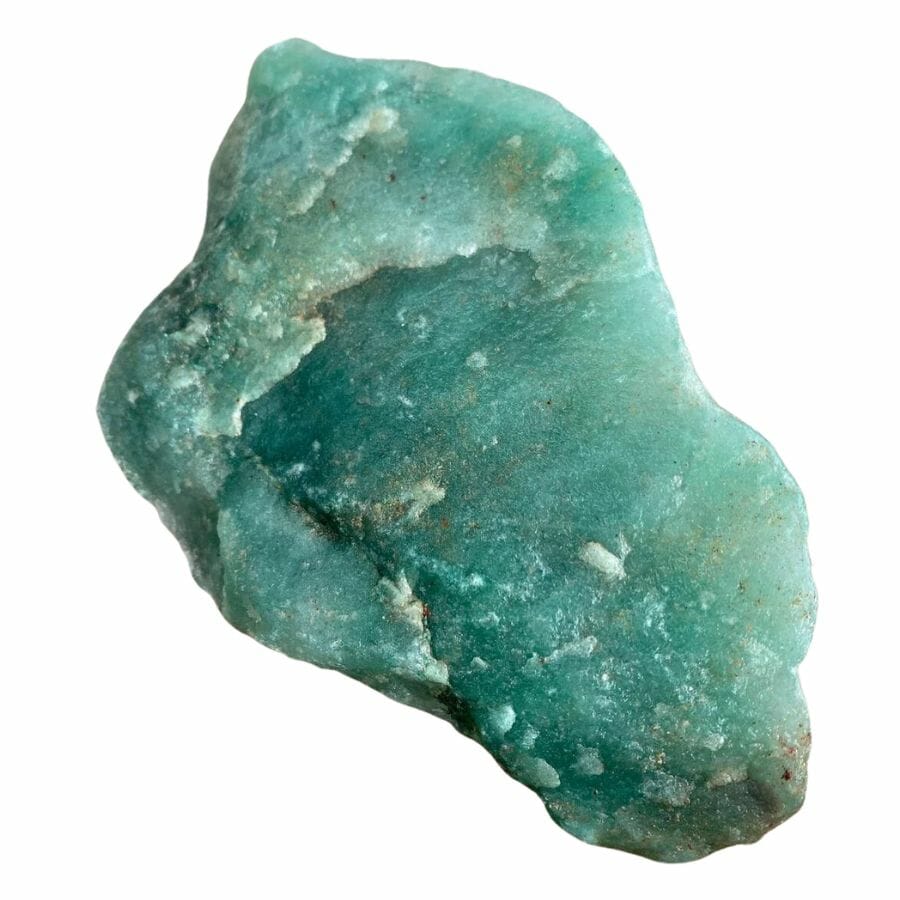
Cleavage and fracture are characteristics that can tell us a lot about different gemstones, including amazonite and aventurine.
What is cleavage? In geological terms, it’s how a mineral breaks when it’s hit just right.
Amazonite is known to show perfect cleavage in two directions. This means that it usually splits into flat surfaces along two different planes.
On the flip side, aventurine doesn’t have any cleavage at all. Why’s that? It’s all down to its structure, which is made up of lots of tiny quartz crystals.
So, instead of splitting along flat planes like amazonite, aventurine breaks in a different way. It tends to break into what’s called a “conchoidal fracture,” which means it breaks into curved surfaces.
So, if a stone splits nicely into pieces, with nice flat surfaces, it could be amazonite. But if it breaks into curved shards, then it’s likely aventurine. These differences in cleavage and fracture can help distinguish between the two gemstones.
Chemical composition – Amazonite has potassium, aluminum, silicon, and oxygen
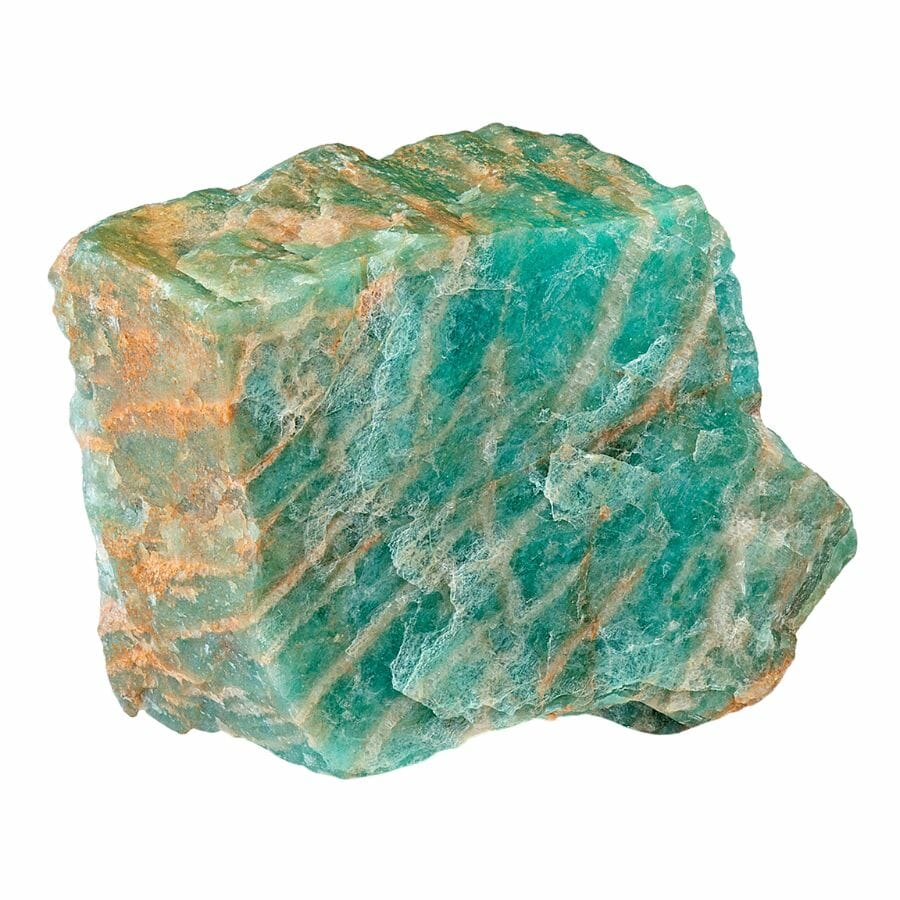
Chemical composition refers to the elements that something is made up of, and it’s one of the things that set amazonite and aventurine apart.
Let’s start with amazonite. It’s made up of potassium, aluminum, silicon, and oxygen. That’s why it’s called a potassium aluminum silicate.
Amazonite’s unique color comes from small amounts of lead and water trapped in its structure. It’s pretty cool to think about how these elements combine to create such a beautiful gemstone!
Aventurine, on the other hand, is a type of quartz. Its composition is a bit simpler – just silicon and oxygen, or silicon dioxide. However, it’s the tiny bits of other minerals trapped inside the aventurine that gives it different colors.
Depending on what those minerals are, aventurine can be green, brown, blue, or even yellow.
Price – Aventurine is the cheaper option
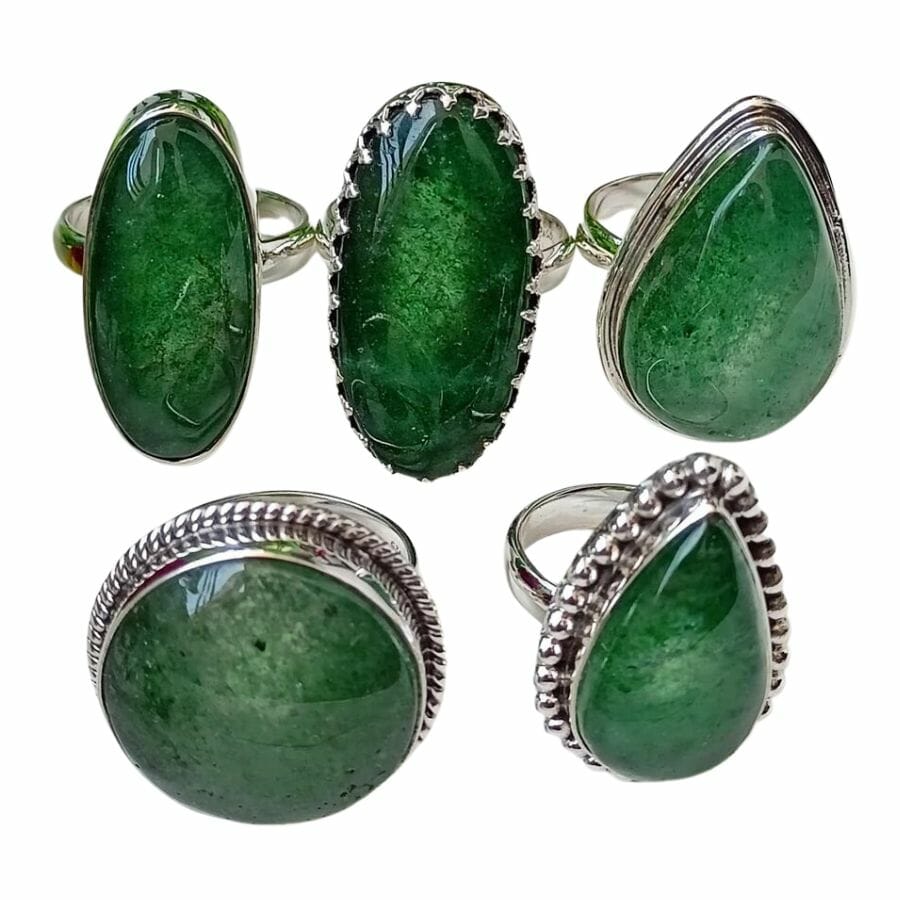
Amazonite and aventurine are typically pretty affordable options for gemstone lovers.
Amazonite is a little pricier than aventurine, but it’s still fairly easy on the wallet. This is because there’s a lot of it in nature.
But like with any gemstone, the cost can go up based on a few things. These include the size of the stone and the quality, for instance. So, the larger the stone and the better the quality, the more it’ll cost.
When trying to determine what amazonite is worth, one must consider factors such as size, quality, and the presence of any unique features in the stone.
Aventurine, on the other hand, is usually less expensive. Its price can change too, depending on a few factors. These include the stone’s color, its size, and how good the aventurescence is.
Out of all the types of aventurine, the green kind is often the most pricey. This is because it’s super popular in jewelry, so there’s a high demand for it.
Location – Amazonite can be found in Brazil, India, the US, and Poland
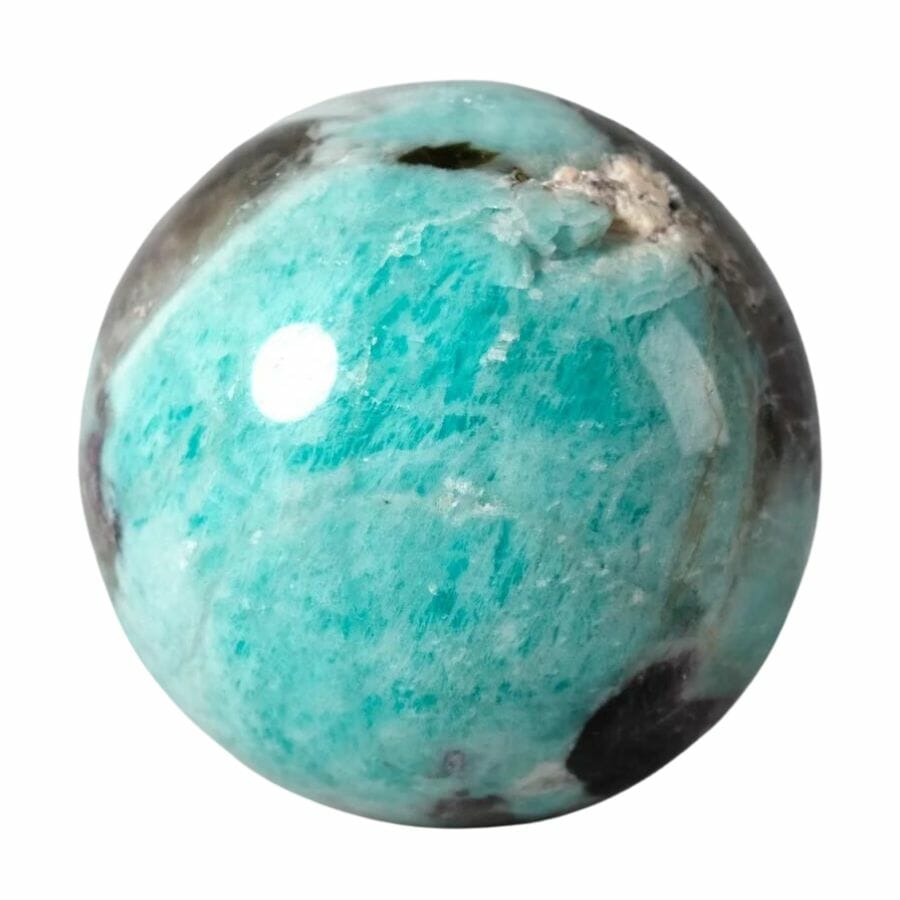
Amazonite and aventurine can be found in different parts of the world, which adds to their intrigue.
Amazonite is known to pop up in various countries around the globe. Small deposits have been discovered in quite a few places, such as the United States, Brazil, Canada, and even as far away as Russia, Australia, and Ethiopia.
Madagascar, Namibia, Norway, Poland, and Sweden also make the list of countries where amazonite has been spotted.
Aventurine, meanwhile, also makes its home in many corners of the world. But the biggest player in aventurine production is India. The country is the number one commercial producer of this sparkling gemstone.
Brazil comes in second place, also producing significant amounts of aventurine. Other countries like Russia, Spain, Austria, and Tanzania contribute to the worldwide supply of aventurine, but their productions are smaller compared to India and Brazil.
A good first step to finding gems near you would be to research the types of gemstones that are common in your area and look for known rockhounding locations nearby.
Aventurine vs Amazonite – The Similarities
Even though amazonite and aventurine have their differences, they share quite a few similarities too. From their density to conductivity, these gemstones exhibit several common traits. Let’s explore these interesting similarities in more detail.
Density – The two minerals have very similar densities
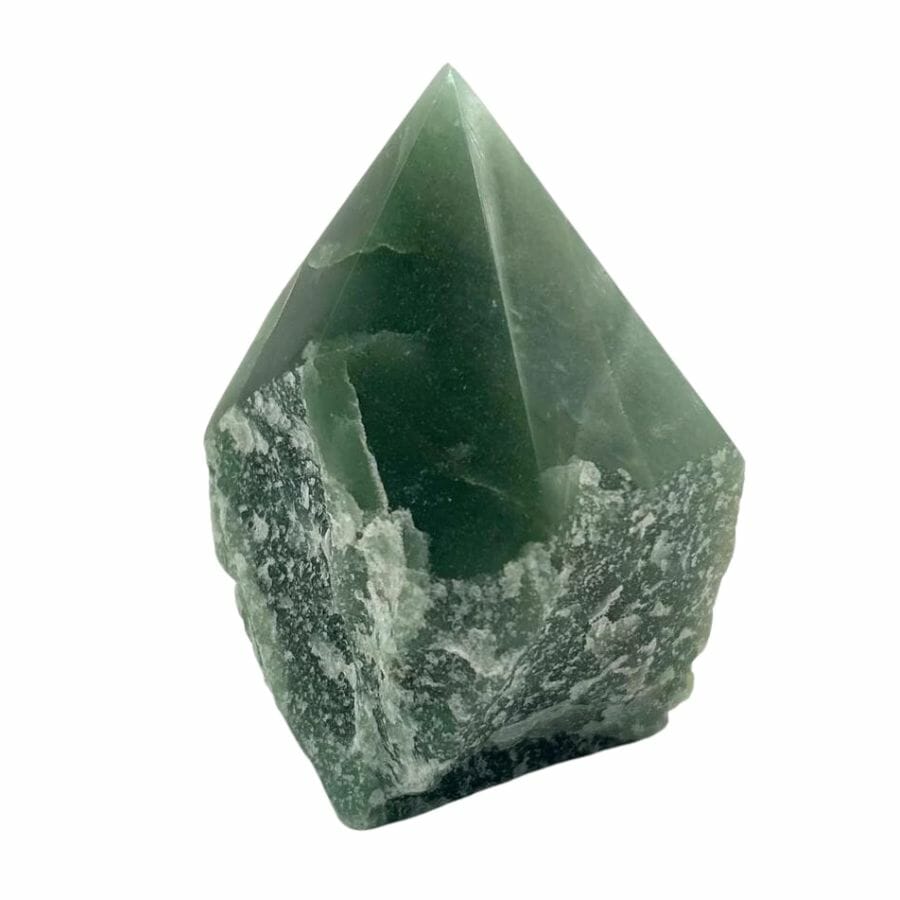
In geology, density refers to how much mass is in a specific volume of a mineral or rock. It’s measured in grams per cubic centimeter (g/cm3) and helps identify different types of rocks and minerals.
The densities of both amazonite and aventurine are pretty close to each other.
Amazonite has a density that usually falls somewhere between 2.6 to 2.8 g/cm3.
Now, keep in mind, the density isn’t always exactly the same. Sometimes there are other elements or minerals mixed in with the amazonite, and this can make the density change a little bit.
Meanwhile, aventurine has a density of 2.6 to 2.7 g/cm3, which is quite similar to amazonite’s density.
Magnetism – Neither mineral is magnetic
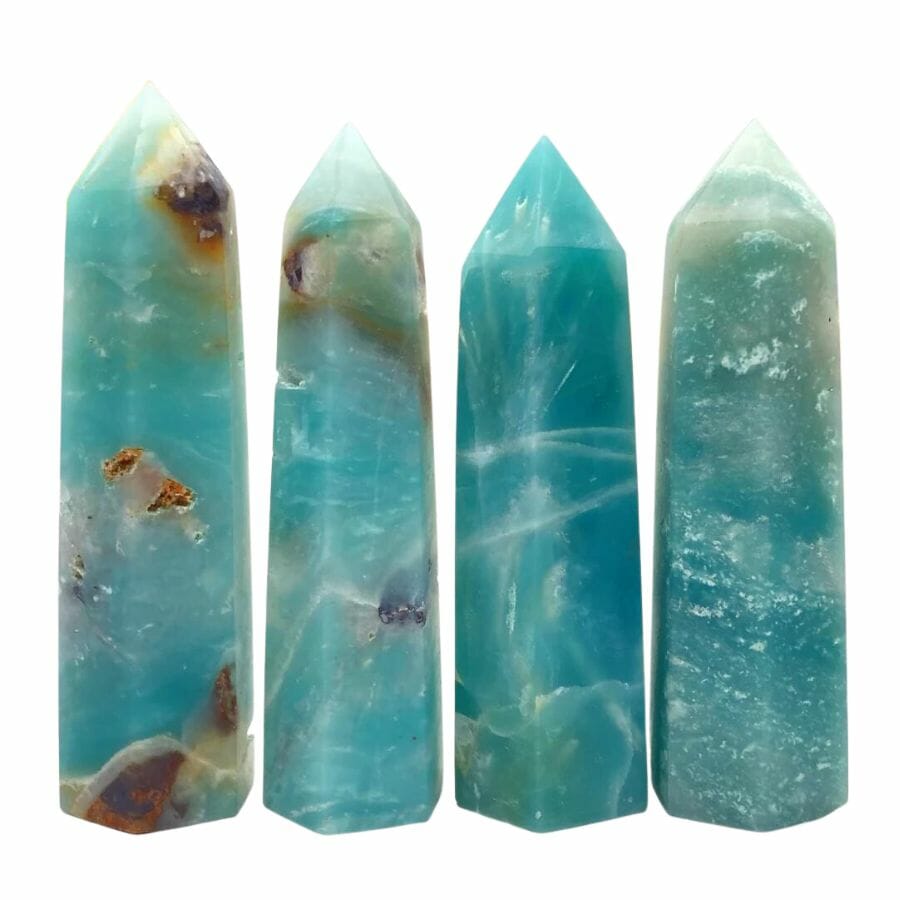
Neither of these stones have any magnetism. That means they won’t stick to a magnet, and you can’t make a magnet out of them.
They’re just not the kind of materials that interact with magnetic fields. If you’ve ever played with magnets, you know that some things, like certain metals, are attracted to magnets. Some things, like plastic or glass, are not.
Amazonite and aventurine fall into that second category. No matter how strong a magnet you have, it won’t have any effect on these stones.
Fluorescence – Both minerals won’t fluoresce under UV light
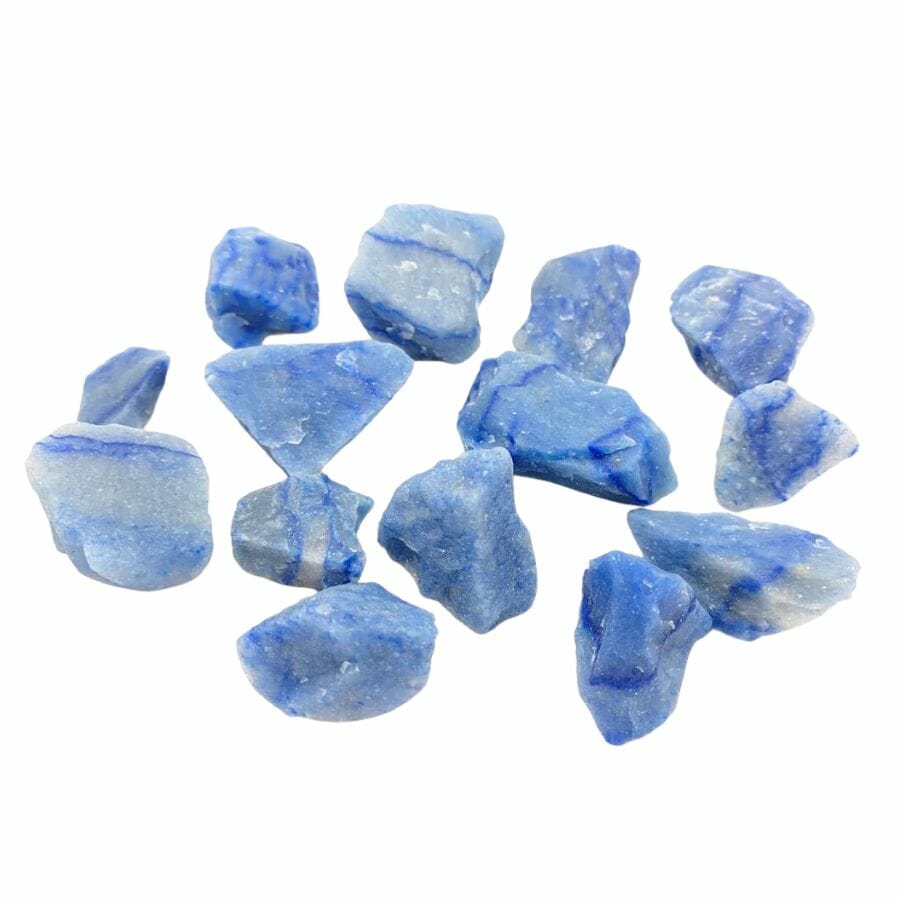
In geology, fluorescence is a property that causes some minerals to glow under ultraviolet (UV) light. The light causes these minerals to emit a visible glow, often in bright and vivid colors, making them stand out in the dark.
But when you shine UV light on amazonite or aventurine, they don’t light up. They look pretty much the same as they do under regular light.
Conductivity – They both won’t let electricity pass through them
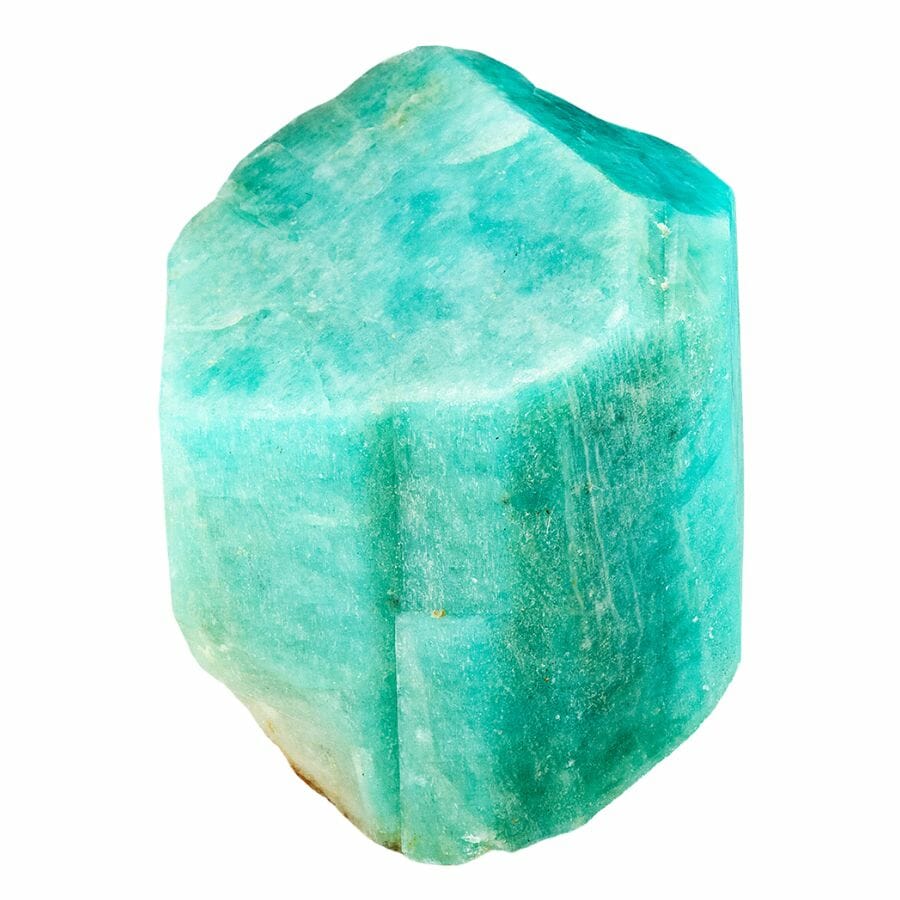
Amazonite and aventurine aren’t good at carrying electricity. This has to do with something called conductivity. In simple terms, conductivity refers to how well something lets electricity move through it.
Now, things like metals are really good conductors. That’s why you see them in stuff like electrical wires.
But amazonite and aventurine, like a lot of rocks and minerals, aren’t so helpful in this department. Even if you tried to run an electrical current through them, they’d pretty much just shrug it off.
These two minerals are part of a larger group called silicates. These types of minerals are known for being poor conductors of electricity.
The Easiest Ways to Tell Amazonite and Aventurine Apart
Ever wondered how to tell the difference between amazonite and aventurine? Let’s dive into two easy methods to tell these two stones apart.
Conduct a streak test
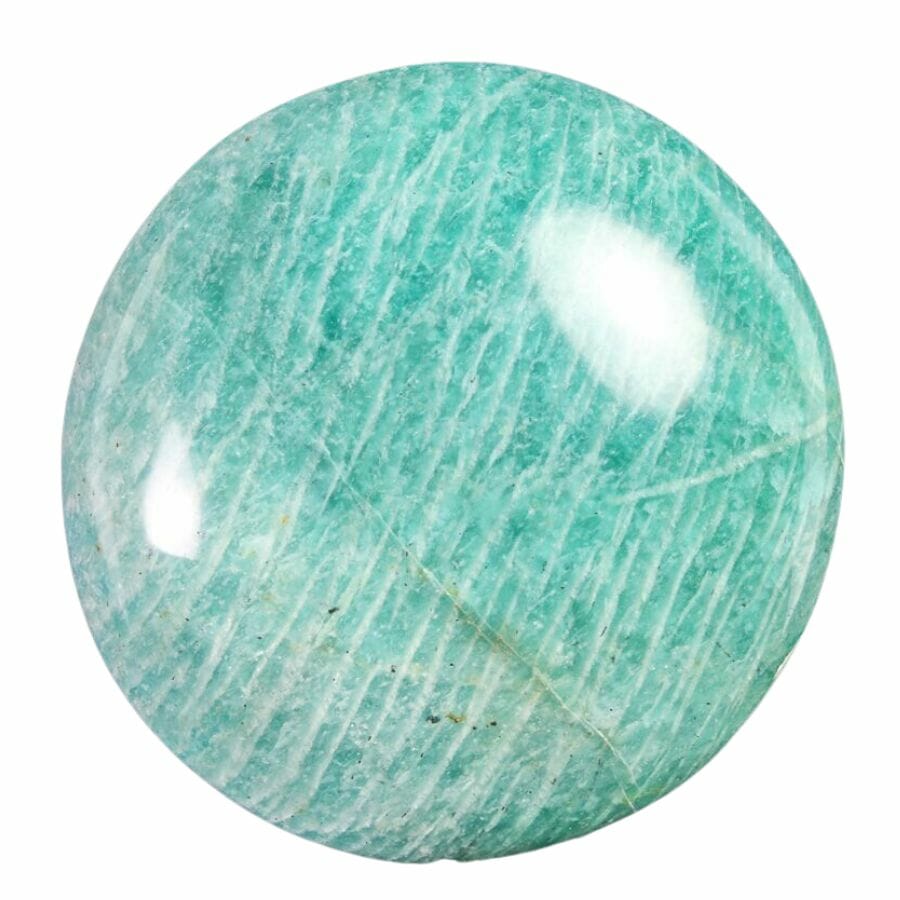
The streak test is a handy tool when you’re trying to identify a mineral. This test involves rubbing a mineral on a streak plate, which is just an unglazed porcelain plate.
It’s like drawing with a crayon on a piece of paper. The color left behind is called the streak.
Amazonite, no matter its outer color, always leaves a white streak.
With aventurine, things are a little different. Instead of leaving a colorful mark, aventurine leaves a colorless streak.
This test can be pretty helpful. If you see a white streak on the plate, the stone you have is unlikely to be aventurine.
Look for sparkles in the stone
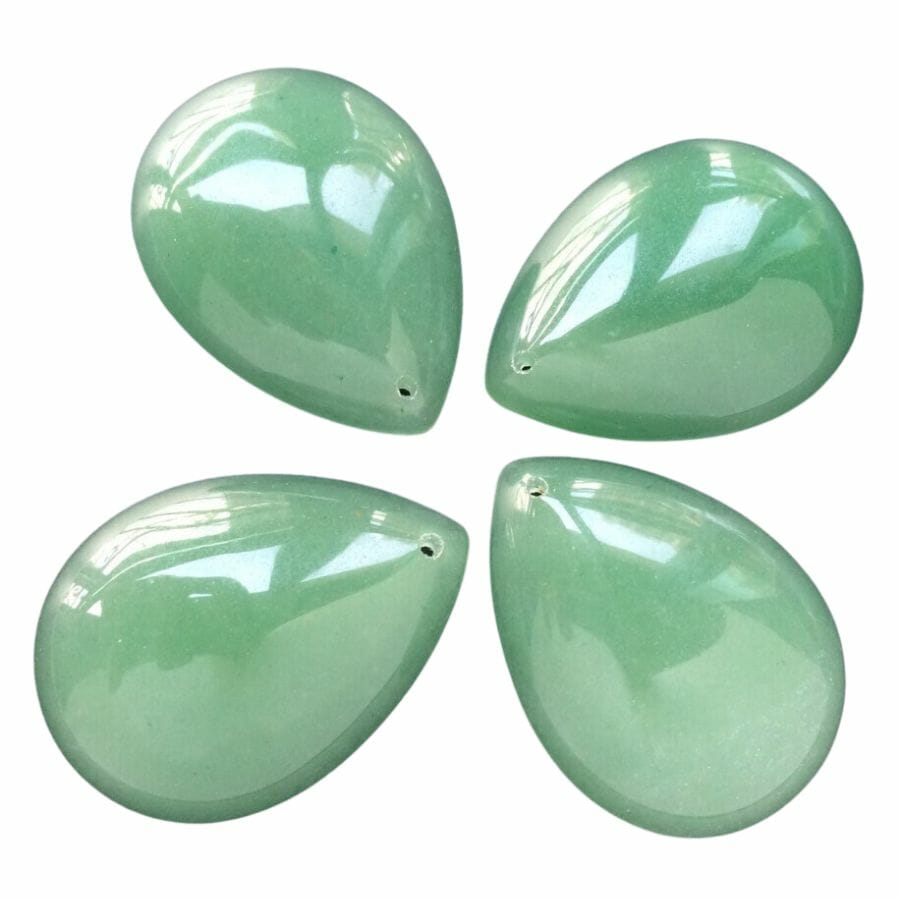
Amazonite doesn’t sparkle like aventurine. Instead, it has a smooth, shiny surface that’s more glassy or pearly.
So, if a stone is all sparkly and catches the light in a million ways, then it’s probably aventurine. But if it’s shiny and glossy without all the glitter, then it’s likely amazonite.
In a nutshell, to tell amazonite and aventurine apart, look for the sparkles and check the streak.
No sparkles and a white streak? That’s likely amazonite. Sparkly with a colorless streak? That’s likely aventurine. Now you’re one step closer to becoming a gemstone expert!

